ISSN 2348-1196 (print)
International Journal of Computer Science and Information Technology Research ISSN 2348-120X (online) Vol. 10, Issue 2, pp: (91-96), Month: April - June 2022, Available at: www.researchpublish.com

ISSN 2348-1196 (print)
International Journal of Computer Science and Information Technology Research ISSN 2348-120X (online) Vol. 10, Issue 2, pp: (91-96), Month: April - June 2022, Available at: www.researchpublish.com
Affan Mohammed N M1, Aqueel Aftab Rawther2, Harishma Mohan3 , Shiyas T S4, Kiran V K5
Department of Computer Science and Engineering, NSS College of Engineering, Palakkad, Kerala, India
DOI: https://doi.org/10.5281/zenodo.6659910
Published Date: 18-June-2022
Abstract: A world without the internet is not something one can imagine. As all things have changed due to the internet, so has shopping. No one wants to buy a product only to be later dissatisfied due to the minor inconvenience brought due to something which wasn't revealed when exploring the product due to lack of resources. The solution is to move into the world of Augmented Reality (AR). Using AR the customer can view the object he intends on buying. The buyer can make sure the product looks to his expectation from any angle. This can prevent the user from making wrong decisions. To put the solution into the real world the seller must provide face images of the product and required dimensions using which a model can be generated which will be shown to the seller.
Keywords: Augmented Reality, Shopping, Buyer, Seller, Products, Visualizing, 3D.
Online shopping has increased these days and has brought great ease to the shopping of the common man. Shopping has never been easier. Now shopping is in the reach of mere fingertips.
This also brings us to many new problems. Humans unconsciously depend on their visual system, auditory system, somatosensory system, olfactory system, and gustatory system a lot. All these senses go dull except the vision system in online shopping. To compensate for the loss of the other four senses one must highly increase the last sense. Augmented reality helps to achieve this task. A highly interactive environment that is a mixture of the virtual and real world. This allows the user to see more than just a picture. Augmented reality places the user in a sub virtual environment where one can use his visual system to the absolute point.
The touch of a material or the way a color compliments the background can all stochastic the choice of the buyer. Since the other factors can’t yet be controlled due to the limitation in technology in our time. We must focus on what we can do and improve the users' potential in using the visual aid.
When a customer buys a product online the need to return the product due to dissatisfaction must be minimized. This is beneficial for both the customer and the seller. As the customer doesn't need to go through the hassle of sending the product back and the seller doesn't need to make refunds for the buyers. Our objective is to give the buyer an immersive experience of the product he desires to buy. This shall allow them to figure out whether the product is to their liking and compatible.
ISSN 2348-1196 (print)
International Journal of Computer Science and Information Technology Research ISSN 2348-120X (online) Vol. 10, Issue 2, pp: (91-96), Month: April - June 2022, Available at: www.researchpublish.com
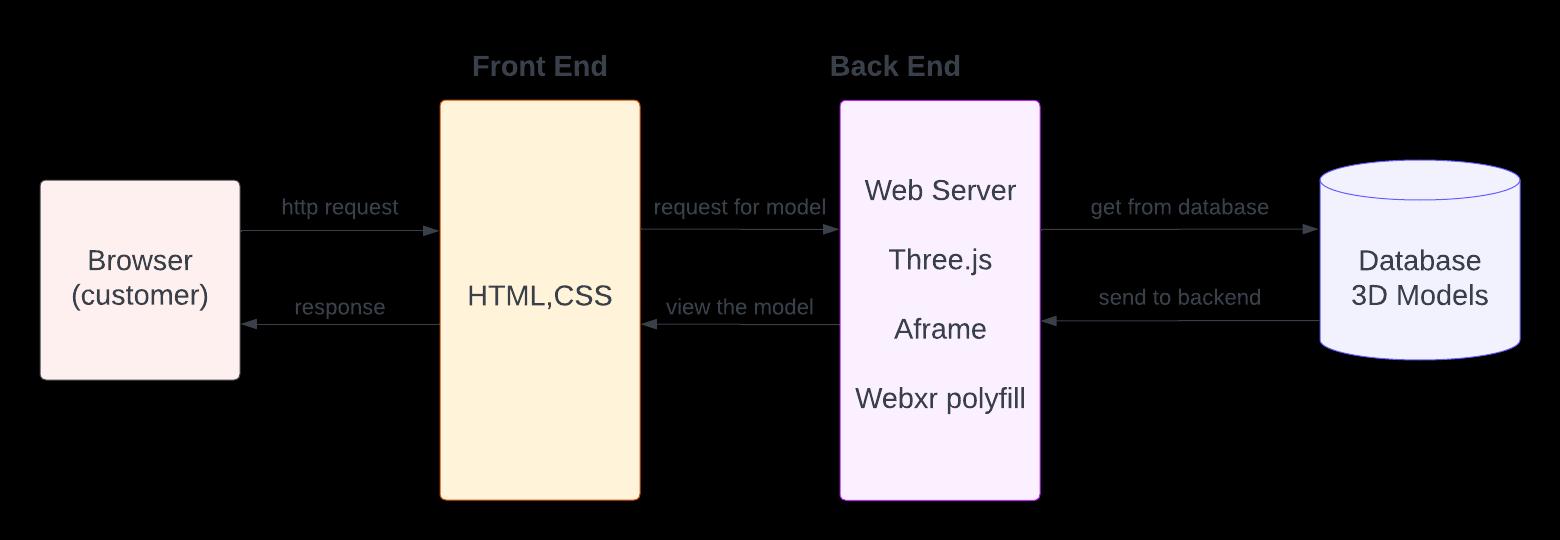
Fig 1: System Architecture
Fig 2: 3D Model Generation

The technological resources accessible to the organization are the subject of this examination. It aids companies in determining whether technical resources are adequate for the job and whether the technical team is capable of turning concepts into operational systems. A technical feasibility study looks into the specifics of how you plan to offer a product or service to clients. It's the logistical or tactical strategy for your company's production, storage, delivery, and tracking of goods and services.
Augmented reality (AR) is a technologically augmented version of the real world that is created through the use of digital visual elements, music, or other sensory stimulation.AR overlays computer-generated content onto the user's real-world surroundings. Internal technical capabilities are thus important.
The software tools that are employed are Polycam, A-Frame, Three.js, Visual Studio Code. A smartphone with a camera and OS is adequate as part of the hardware is adequate to satisfy the standards of our work.
Economic feasibility is a type of cost-benefit analysis of the project under consideration that determines if it can be implemented. This phrase refers to the objective and reasonable identification of a project's strengths, weaknesses, opportunities, and risks, as well as the resources required to accomplish the project and an estimate of its chances of success, to support the decision-making process. This project requires open source tools, and the data set is developed personally rather than purchased. There is no need for any special hardware or sensors in our work. As a result, we may say that this system is economically viable.
We start by collecting the images of the product that the seller wants to show. We collect over 20 images of the product from different height ranges and different angles trying to cover all of the faces of the product. A 3D model is created combining all these images obtained. We may or may not need to do some post-processing on the obtained 3D model. The cleaned 3D model is used later to display the product to the user.
ISSN 2348-1196 (print)
International Journal of Computer Science and Information Technology Research ISSN 2348-120X (online) Vol. 10, Issue 2, pp: (91-96), Month: April - June 2022, Available at: www.researchpublish.com
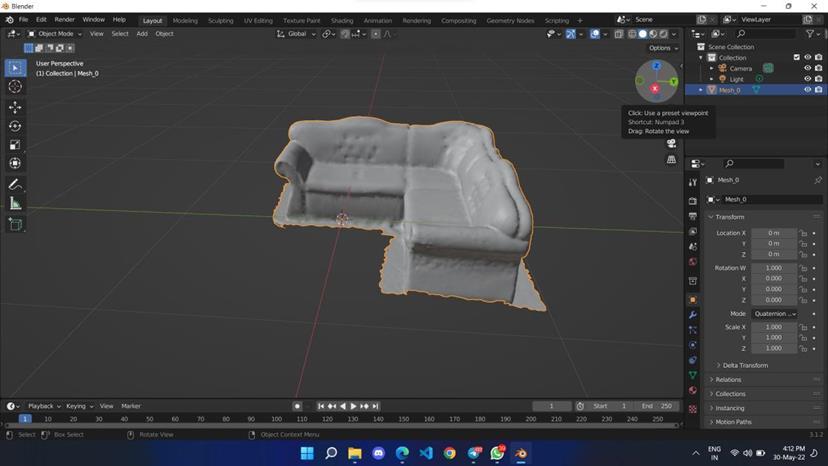
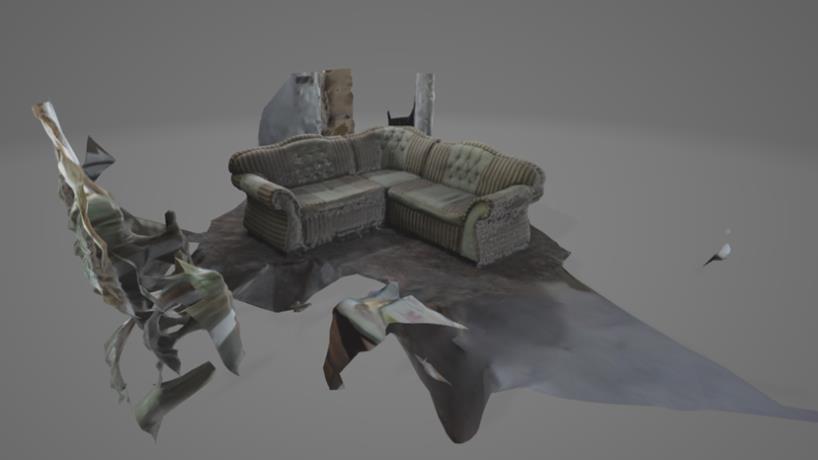
A web page is shown to the buyer who can choose what genre or class of product he wants. The buyer here can select from the available genre the products he wishes to see in Augmented Reality. The web page is mainly built under HTML and CSS. HTML, or Hypertext Markup Language, is the standard markup language for texts that are intended to be viewed on a web browser. Technologies such as Cascading Style Sheets (CSS) and programming languages like JavaScript can help. CSS stands for Cascading Style Sheets. CSS saves a lot of work as it can control the layout of multiple web pages all at once.
Fig 5: Webpage desktop view
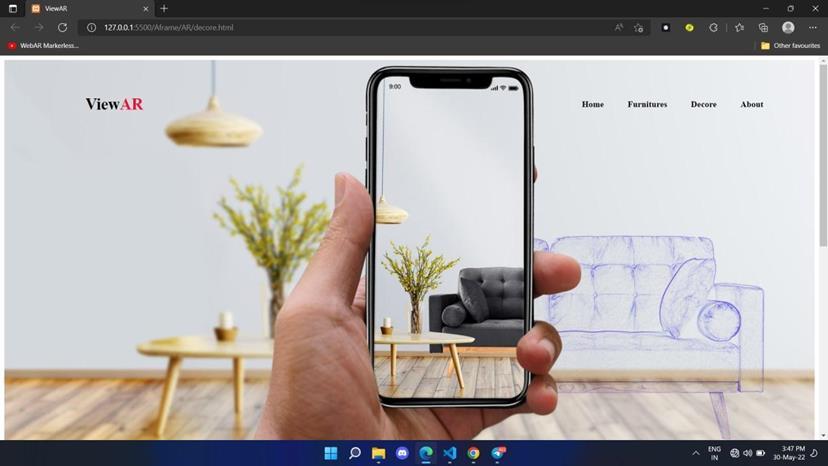
ISSN 2348-1196 (print)
International Journal of Computer Science and Information Technology Research ISSN 2348-120X (online) Vol. 10, Issue 2, pp: (91-96), Month: April - June 2022, Available at: www.researchpublish.com
Web browsers receive HTML documents from a web server or locally stored files and convert them to multimedia web pages. HTML originally featured cues for the document's look and described the structure of a web page logically.
To incorporate the 3D model developed before into the web page created afterward, the A-Frame was used. A-Frame is a web framework for creating virtual reality (VR) experiences that is open-source. It is maintained by Supermedium (Diego Marcos, Kevin Ngo) and Google developers (Don McCurdy). A-Frame is a Three.js entity component system framework that allows developers to use HTML to construct 3D and WebVR environments. HTML gives web developers and designers a familiar authoring tool while also including a popular game development framework used by engines like Unity.
Using port forwarding features to launch the web server temporarily into the mobile device. Web servers, FTP servers, email servers, and other specialized Internet applications can all be set up using port forwarding on your network. The router will pass these requests to the proper computer when users send this type of request to your network via the Internet. When customers are unable to connect to a Linksys router-connected FTP server, the FTP ports must be forwarded to the server in order for the request to be recognized. If you're using a server PC or a game server, this is set up on the router.
AR Core plays a huge role in the implementation or displaying of the 3D model in the augmented reality world. ARCore, previously known as Google Play Services for AR, is a Google software development kit that allows developers to create augmented reality apps.
To merge virtual information with the real world as seen through the camera of a smartphone or tablet, ARCore employs three main technologies.
● The phone can understand and track its position in relation to the rest of the world thanks to its six degrees of freedom.
● The phone can determine the size and location of flat horizontal surfaces such as the ground or a coffee table thanks to its environmental awareness.
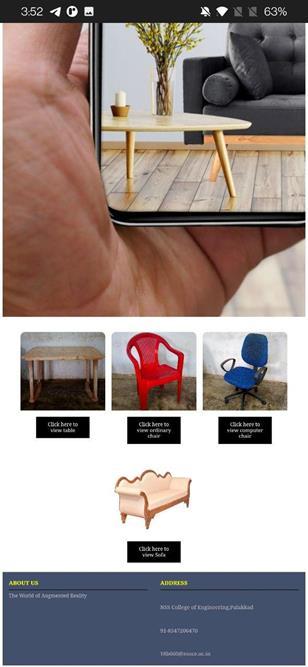
ISSN 2348-1196 (print)
International Journal of Computer Science and Information Technology Research ISSN 2348-120X (online) Vol. 10, Issue 2, pp: (91-96), Month: April - June 2022, Available at: www.researchpublish.com
Fig 7: Preplacement view
Fig 8: Placed view in different angles
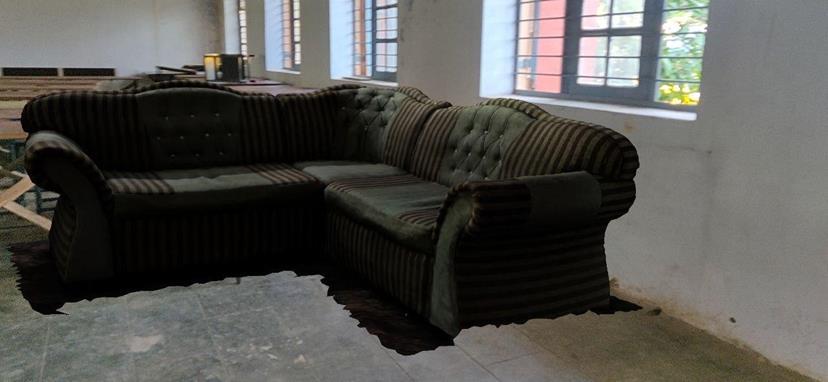
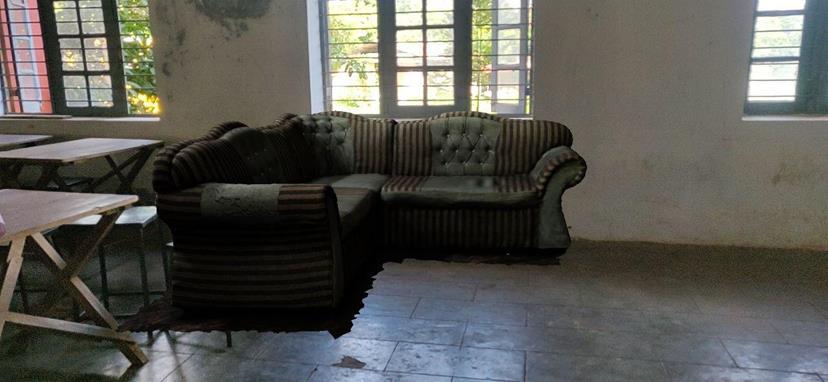
In this paper, we proposed a hybrid approach to visually aid and improve the online shopping experience of a buyer. Creation of a 3D object from pictures obtained where the pictures cover at least fifty percent of the previous image. This allows the images to be merged together and create a 3D model. The obtained 3D model is displayed using A-Frame in the real world with the help of AR-Core through a mobile phone. We would like to extend the work in future by including automatic cleaning of the model. We also wish to create 3D model of the product in much faster and real-time environment
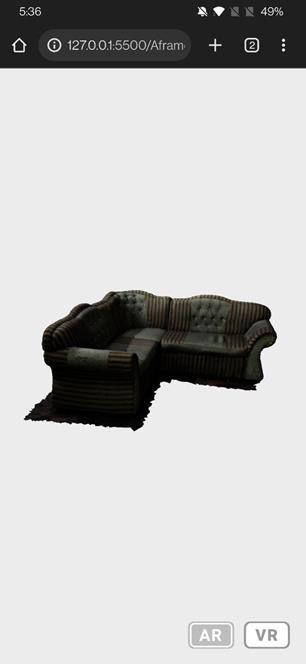
[1] Hong Qin, BabjideOsatuyi, Lu xu, “How mobile augmented reality applications affect continuous use and purchase intentions: A cognition-affect-donation perspective”, Journal of Retailing and Consumer Services,Vol.63,November 2021, 102680.
[2] Andreea Blaga, Cristian Militaru, Ady Daniel Mezei, Levente Tamas, “Augmented reality integration into MES for connected workers”, Augmented reality integration into MES for connected workers, Vol.68, April 2021
[3] D. Matveichev and D. -T. Lin, "Mobile Augmented Reality: Fast, Precise, and Smooth Planar Object Tracking," 2020 25th International Conference on Pattern Recognition (ICPR), 2021.
ISSN 2348-1196 (print)
International Journal of Computer Science and Information Technology Research ISSN 2348-120X (online) Vol. 10, Issue 2, pp: (91-96), Month: April - June 2022, Available at: www.researchpublish.com
[4] L. Chen, Y. Chen, H. Ling, X. Tian, and Y. Tian, "Learning Robust Features for Planar Object Tracking," in IEEE Access, vol. 7, pp. 90398- 90411, 2019.
[5] Yong Wu,WeitaoChe,andBihui Huang “An Improved 3D Registration Method of Mobile Augmented Reality for Urban Built Environment”, International Journal of Computer Games Technology Volume 2021, Article ID 8810991, 2021.
[6] M. SushmaSri ”Object Detection and Tracking using KLT Algorithm”, IJEDR Volume 7, Issue 2,ISSN: 2321-9939, 2019
1 Affan Mohammed N Marikar is pursuing B. Tech degree in computer science and engineering from NSS College of Engineering under APJ Abdul Kalam Kerala Technological University, India in 2018-2022


2 Aqueel Aftab Rawther is pursuing B. Tech degree in computer science and engineering from NSS College of Engineering under APJ Abdul Kalam Kerala Technological University, India in 2018-2022

3 Harishma Mohan is pursuing B. Tech degree in computer science and engineering from NSS College of Engineering under APJ Abdul Kalam Kerala Technological University, India in 20182022

4 Shiyas T S is pursuing B. Tech degree in computer science and engineering from NSS College of Engineering under APJ Abdul Kalam Kerala Technological University, India in 2018-2022
5 Kiran V K, assistant professor department of Computer Science and Engineering from NSS College of Engineering under APJ Abdul Kalam Kerala Technological University, India.
